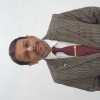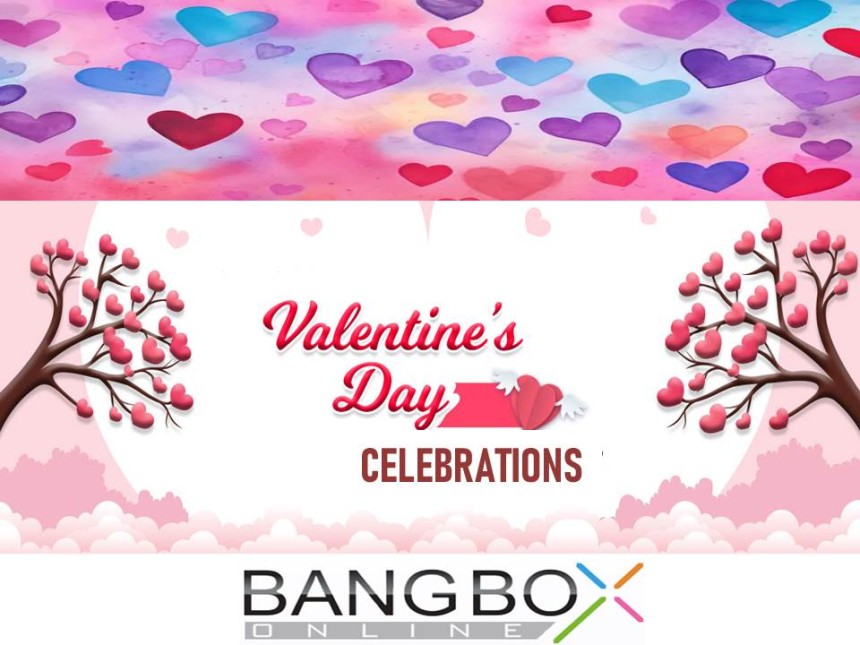
Poem “The Second Coming” and Message for Today
"The Second Coming" is a poem written by Irish poet W. B. Yeats in 1919. William Butler Yeats was an Irish poet, dramatist and writer, and one of the foremost figures of 20th-century literature. This is a great poem by a Modernist instinctively but possibly unwittingly anticipating the forthcoming ravages of Modernism. What lessons can be learned today from the poem of 100 years ago? This is a bi-lingual English and Urdu write up for the readers of Bangbox Online.
Poem “The Second Coming” and Message for Today
“The Second Coming” By William Butler Yeats
Turning and turning in the widening gyre
The falcon cannot hear the falconer;
Things fall apart; the centre cannot hold;
Mere anarchy is loosed upon the world,
The blood-dimmed tide is loosed, and everywhere
The ceremony of innocence is drowned;
The best lack all conviction, while the worst
Are full of passionate intensity.
Surely some revelation is at hand;
Surely the Second Coming is at hand.
The Second Coming! Hardly are those words out
When a vast image out of Spiritus Mundi
Troubles my sight: somewhere in sands of the desert
A shape with lion body and the head of a man,
A gaze blank and pitiless as the sun,
Is moving its slow thighs, while all about it
Reel shadows of the indignant desert birds.
The darkness drops again; but now I know
That twenty centuries of stony sleep
Were vexed to nightmare by a rocking cradle,
And what rough beast, its hour come round at last,
Slouches towards Bethlehem to be born?
William Butler Yeats was an Irish national. "The Second Coming" is one of W.B. Yeats's most famous poems. Written in 1919 soon after the end of World War I, it describes a deeply mysterious and powerful alternative to the Christian idea of the Second Coming—Jesus's prophesied return to the Earth as a savior announcing the Kingdom of Heaven. The poem's first stanza describes a world of chaos, confusion, and pain. The second, longer stanza imagines the speaker receiving a vision of the future, but this vision replaces Jesus's heroic return with what seems to be the arrival of a grotesque beast. With its distinct imagery and vivid description of society's collapse, "The Second Coming" is also one of Yeats's most quoted poems.
The Summary of “The Second Coming”
Flying around and around in a widening spiral, a falcon can no longer hear the call of its owner. Things are breaking down, and their foundation is giving way. Pure destruction and lawlessness have spread across the world, and so has a tidal wave darkened by blood. All the rituals of innocence have been swallowed by this tide. The best people aren't motivated to act, but the worst people are impassioned and eager.
Some kind of revelation has to happen soon, and the Second Coming itself must be close. Excitedly, the speaker exclaims: "The Second Coming!" But just as the speaker says this, a vision comes to the speaker from the world's collective unconscious. The speaker sees a barren desert land, where a creature with a man's head and a lion's body is coming to life. Its expression is, like the sun, empty and without pity. Its legs are moving slowly, and all around it fly the shadows of disturbed desert birds. Everything becomes dark again, but the speaker knows something new: two thousand years of calm have been irreversibly disrupted by the shaking of a cradle. The speaker asks: what beast, whose time has finally come, is dragging itself towards Bethlehem, where it will be born.
“The Second Coming” Themes
Theme.1: Civilization, Chaos, and Control
“The Second Coming” presents a nightmarish apocalyptic scenario, as the speaker describes human beings’ increasing loss of control and tendency towards violence and anarchy. Surreal images fly at the reader thick and fast, creating an unsettling atmosphere that suggests a world on the brink of destruction.
Yet for all its metaphorical complexity, “The Second Coming” actually has a relatively simple message: it basically predicts that time is up for humanity, and that civilization as we know it is about to be undone. Yeats wrote this poem right after World War I, a global catastrophe that killed millions of people. Perhaps it’s unsurprising, then, that the poem paints a bleak picture of humanity, suggesting that civilization’s sense of progress and order is only an illusion.
With the above in mind, the first stanza’s challenging imagery starts to make more sense. The “falconer,” representing humanity’s attempt to control its world, has lost its “falcon” in the turning “gyre” (the gyre is an image Yeats uses to symbolize grand, sweeping historical movements as a kind of spiral). These first lines could also suggest how the modern world has distanced people from nature (represented here by the falcon). In any case, it’s clear that whatever connection once linked the metaphorical falcon and falconer has broken, and now the human world is spiraling into chaos.
Indeed, the poem suggests that though humanity might have looked like it was making progress over the past “twenty centuries”—via seemingly ever-increasing knowledge and scientific developments, for example—the First World War proved people to be as capable of self-destruction as ever. “Anarchy” was “loosed upon the world,” along with tides of blood (which clearly evoke the mass death of war). “Innocence” was just a “ceremony,” now “drowned.” The “best” people lack “conviction,” which suggests they're not bothering to do anything about this nightmarish reality, while the “worst” people seem excited and eager for destruction. The current state of the world, according to the speaker, proves that the "centre"—that is, the foundation of society—was never very strong.
In other words, humanity’s supposed arc of progress has been an illusion. Whether the poem means that humanity has lost its way or never knew it to begin with is unclear, but either way the promises of modern society—of safety, security, and human dignity—have proven empty. And in their place, a horrific creature has emerged—a grotesque perversion of the “Second Coming” promised by Christianity, during which Jesus Christ is supposed to return to the earth and invite true believers to heaven. This Second Coming is clearly not Jesus, but instead a “rough beast” that humanity itself has woken up (perhaps, the first stanza implies, by the incessant noise of its many wars).
With this final image of the beast, the poem indicates that while humanity seemed to get more civilized in the 2,000 years that followed Christ's birth, in reality people have been sowing the seeds of their own destruction all along. This “rough beast” is now “pitilessly” slouching toward the birthplace of Jesus—likely in order to usher in a new age of “darkness” and “nightmare.”
Theme.2: Morality and Christianity
“The Second Coming” offers an unsettling take on Christian morality, suggesting that it is not the stable and reliable force that people believe it to be. The poem clearly alludes to the biblical Book of Revelation from the start, in which, put simply, Jesus returns to Earth to save the worthy. According to the Bible, this is meant to happen when humanity reaches the end times: an era of complete war, famine, destruction and hatred. The poem suggests that the end times are already happening, because humanity has lost all sense of morality—and perhaps that this morality was only an illusion to begin with.
What's more, the poem suggests that no one—not even Jesus—can remedy this bleak reality. The biblical Book of Revelation predicts a kind of final reckoning in which people essentially get what they deserve based on their moral behavior and religious virtues; it indicates that Jesus will come to save those who are worthy of being saved. But “The Second Coming” offers no such comfort.
Instead, in the first line of the second stanza the poem hints that a moment of divine intervention must be at hand after the chaos of the first stanza ("surely some revelation is at hand"). And, as it turns out, "some revelation" is at hand. But rather than returning the world to peace, this new revelation makes things worse: a new and grotesque beast heads toward Bethlehem, the birthplace of Jesus, to be brought into the world. If Jesus was the figurehead for a moral movement, this new beastly leader is the figurehead of a new world of “anarchy,” in which the “best” people (likely the most moral people) lack the courage of their convictions and the “worst” are allowed to thrive. In other words, the poem portrays Christian morality and prophecy as weak, or even proven false, in the face of the violence and destruction that humans have created.
The “blank gaze” of this new creature provides further evidence of just how hopeless the situation is. This being might have the head of a “man,” but it doesn’t have moral sense—instead, it is “pitiless.” It is arriving to preside over “blood-dimmed tide[s]” and “drowned’ “innocence”—not a world of kindness, charity, and justice. Its sphinx-like appearance is also deliberately at odds with Christian imagery, which further suggests a break with Christian morality. Meanwhile, the “Spiritus Mundi” mentioned by the poem is what Yeats thought of as the world’s collective unconscious, from which the poet could draw insight. This vision of the beast, then, is suggestive of a worldwide shift into “anarchy,” as the collective mind of humanity lets go of morality.
[The above taken from https://www.litcharts.com/poetry/william-butler-yeats/the-second-coming]
What lessons can be learned today from the poem of 100 years ago?
William Butler Yeats was a poet and was certainly "acquainted with the teachings of Christianity; then he would have known about the return of Jesus to this world." It was impossible not to affect any human being; So the poet Yeats must have shown his heart. He was not an astrologer; But a changing world was definitely depicted; This is what the world has seen happen during the last hundred years. First there was the Second World War and then Western Christians dominated the whole world with a godless secular liberal civilization. This civilization was like a rough, painless and cruel animal. It gradually took over the whole world.
But as " Every rise has a Fall" on 9/11, the planes that crashed into New York's Twin Towers started a new series of destruction that was like a rising whirlwind that engulfed the West as well. Now the world stands at a new crossroads. The destination will be a journey of peace and tranquility or a new world war; Only time will tell; But living nations are prepared for every situation. What and how will it be prepared; a glimpse of this is provided by a poem in Urdu.

ولیم بٹلر یٹس کی نظم " دوسری آمد"۔
چکراتا اور ایک بڑھتے گولے میں غوطے لگاتا
باز اپنے مالک کو سن نہیں سکا۔
چیزیں بکھر جاتی ہیں؛ جب مرکز سنبھال نہیں سکتا۔
دنیا پر مہیب فتنہ کھول دیا گیا ہے
خون کی مدھم لہر ہر طرف سے اٹھ رہی ہے
معصومیت کا اعزاز ملیا میٹ ہوگیا ہے؛
مقرب و معزز یقین سے خالی ہیں؛ جبکہ
بدقماش شدت سے بھرے پرجوش ہیں۔
یقیناً کسی وحی کی آمد قریب ہے۔
یقیناً دوسری آمد قریب ہے۔
دوسری آمد! مشکل سے یہ الفاظ ادا ہوئے ہیں
جب "عالمی روح " کا وسیع عکس میری بصارت کو پریشان کردیتی ہے۔
کہیں صحرا کی ریت میں ابھرتا ہوا ایک ہیت؛
شیر کے جسم اور آدمی کے سر والا۔
سورج کی طرح بے رحم خالی نگاہ رکھنے والا؛
اپنی رانوں کو آہستہ حرکت دے رہا ہے، جبکہ سب کچھ اس سے متعلق ہے۔
صحرائی پرندوں کے غضبناک سائے؛
اندھیرا پھر چھٹ جاتا ہے۔ لیکن اب میں جانتا ہوں؛
وہ بیس صدیوں کی سخت بے رحم نیند؛
ایک لرزتے جھولے کے ڈراؤنے خوابوں سے پریشان تھے؛
اور کیسا بے درد حیوان ہے؟ آخر کار اس کی گھڑی آن پہنچی ہے؛
بیت لحم میں پیدا ہونے والے کو سلام ۔
ولیم بٹلر یٹس کی نظم " دوسری آمد"۔
" ولیم بٹلر ییٹس ایک آئرش شاعر تھے۔ دی سیکنڈ کمنگ" ولیم بٹلر یٹس کی مشہور ترین نظموں میں سے ایک ہے۔یہ نظم پہلی جنگ عظیم کے خاتمے کے فوراً بعد 1919 میں لکھی گئی، یہ دوسری آمد کے مسیحی خیال کے ایک گہرے پراسرار اور طاقتور متبادل کو بیان کرتی ہے- آسمان کی بادشاہی کا اعلان کرنے والے نجات دہندہ کے طور پر یسوع کی زمین پر واپسی کی پیشین گوئی۔ نظم کا پہلا بند افراتفری، الجھن اور درد کی دنیا کو بیان کرتا ہے۔ دوسرا، لمبا بند یہ تصور کرتا ہے کہ مقرر کو مستقبل کا نظارہ مل رہا ہے، لیکن یہ وژن یسوع کی بہادری سے واپسی کی جگہ لے لیتا ہے جو ایک عجیب و غریب درندے کی آمد لگتا ہے۔ اپنی الگ تصویر کشی اور معاشرے کے خاتمے کی واضح وضاحت کے ساتھ، "دی سیکنڈ کمنگ" بھی ییٹس کی سب سے زیادہ نقل کی گئی نظموں میں سے ایک ہے۔
ولیم بٹلر یٹس کی نظم " دوسری آمد" کا خلاصہ
ایک بڑھتے گولے میں اِدھر اُدھر اُڑتے ہوئے، ایک باز اب اپنے مالک کی پکار نہیں سن سکتا۔ چیزیں ٹوٹ رہی ہیں، اور ان کی بنیاد راستہ دے رہی ہے۔ خالص تباہی اور لاقانونیت پوری دنیا میں پھیل چکی ہے، اور اسی طرح ایک سمندری لہر خون سے سیاہ ہو گئی ہے۔ معصومیت کی تمام رسمیں اس لہر نے نگل لی ہیں۔ بہترین لوگ کام کرنے کے لیے حوصلہ افزائی نہیں کرتے، لیکن بدترین لوگ جذباتی اور شوقین ہوتے ہیں۔
کسی قسم کا انکشاف جلد ہی ہونا ہے، اور دوسری آمد بذات خود قریب ہونی چاہیے۔ جوش میں، اسپیکر نے کہا: "دوسری آمد!" لیکن جس طرح کہنے والا یہ کہتا ہے، دنیا کے اجتماعی لاشعور سے مخاطب کو ایک وژن آتا ہے۔ بولنے والا ایک بنجر صحرائی سرزمین کو دیکھتا ہے، جہاں انسان کے سر اور شیر کے جسم کے ساتھ ایک مخلوق زندہ ہو رہی ہے۔ اس کا اظہار سورج کی طرح خالی اور ترس کے بغیر ہے۔ اس کی ٹانگیں آہستہ آہستہ چل رہی ہیں اور اس کے چاروں طرف پریشان صحرائی پرندوں کے سائے اڑ رہے ہیں۔ سب کچھ پھر سے تاریک ہو جاتا ہے، لیکن بولنے والے کو کچھ نیا معلوم ہوتا ہے: جھولا ہلنے سے دو ہزار سال کا سکون ناقابل واپسی طور پر منقطع ہو گیا ہے۔ کہنے والا پوچھتا ہے: وہ کون سا حیوان ہے، جس کا وقت آ گیا ہے، اپنے آپ کو بیت المقدس کی طرف گھسیٹ رہا ہے، جہاں وہ پیدا ہو گا۔
نظم کا مرکزی خیال
نقطہ اول: تہذیب، افراتفری، اور کنٹرول
"دوسری آمد" ایک ڈراؤنے خواب کا منظرنامہ پیش کرتا ہے، جیسا کہ اسپیکر انسانوں کے بڑھتے ہوئے کنٹرول میں کمی اور تشدد اور انارکی کی طرف رجحان کو بیان کرتا ہے۔ غیر حقیقی تصاویر قارئین پر موٹی اور تیزی سے اڑتی ہیں، ایک بے چین ماحول پیدا کرتی ہے جو تباہی کے دہانے پر موجود دنیا کی نشاندہی کرتی ہے۔
اس کے باوجود اس کی تمام استعاراتی پیچیدگیوں کے لیے، "دوسری آمد" درحقیقت ایک نسبتاً آسان پیغام ہے: یہ بنیادی طور پر پیش گوئی کرتا ہے کہ انسانیت کے لیے وقت آ گیا ہے، اور وہ تہذیب جیسا کہ ہم جانتے ہیں کہ یہ ختم ہونے والی ہے۔ ییٹس نے یہ نظم پہلی جنگ عظیم کے فوراً بعد لکھی تھی، یہ ایک عالمی تباہی تھی جس میں لاکھوں لوگ مارے گئے تھے۔ پھر شاید یہ حیرت کی بات نہیں ہے کہ نظم انسانیت کی ایک تاریک تصویر پیش کرتی ہے، جو یہ بتاتی ہے کہ تہذیب کی ترقی اور ترتیب کا احساس صرف ایک وہم ہے۔
مندرجہ بالا کو ذہن میں رکھتے ہوئے، پہلے بند کی چیلنجنگ منظر کشی زیادہ معنی خیز ہونے لگتی ہے۔ "فالکنر"، جو انسانیت کی اپنی دنیا کو کنٹرول کرنے کی کوشش کی نمائندگی کرتا ہے، اپنے "فالکن / باز" کو موڑتے ہوئے " ایک بڑھتے گولے" میں کھو چکا ہے (ایک ایسی تصویر ہے جسے شاعر ایک قسم کے بڑھتے گولے کے طور پر عظیم، وسیع تاریخی حرکت کی علامت کے لیے استعمال کرتا ہے)۔ یہ پہلی سطریں یہ بھی بتا سکتی ہیں کہ کس طرح جدید دنیا نے لوگوں کو فطرت سے دور کیا ہے (جس کی نمائندگی یہاں فالکن/ باز نے کی ہے)۔ کسی بھی صورت میں، یہ واضح ہے کہ جو بھی تعلق کبھی استعاراتی فالکن اور فالکنر کو جوڑتا تھا وہ ٹوٹ گیا ہے، اور اب انسانی دنیا افراتفری کی طرف بڑھ رہی ہے۔
درحقیقت، نظم سے پتہ چلتا ہے کہ اگرچہ انسانیت ایسا لگتا ہے جیسے وہ پچھلی "بیس صدیوں" میں ترقی کر رہی تھی — بظاہر بڑھتے ہوئے علم اور سائنسی ترقیات کے ذریعے، مثال کے طور پر — پہلی جنگ عظیم نے ثابت کیا کہ لوگوں کو خود کو خود سے بچانے کے قابل بنایا گیا ہے۔ ہمیشہ کی طرح تباہی. خون کی لہروں کے ساتھ (جو واضح طور پر جنگ کی بڑے پیمانے پر موت کو جنم دیتی ہے) کے ساتھ "انارکی" "دنیا پر چھائی ہوئی تھی"۔ "معصومیت" صرف ایک "تقریب" تھی، اب "ڈوب گئی" "بہترین" لوگوں میں "یقین" کی کمی ہوتی ہے، جس سے پتہ چلتا ہے کہ وہ اس خوفناک حقیقت کے بارے میں کچھ کرنے کی زحمت نہیں کر رہے ہیں، جب کہ "بدترین" لوگ پرجوش اور تباہی کے لیے بے تاب نظر آتے ہیں۔ مقرر کے مطابق دنیا کی موجودہ حالت یہ ثابت کرتی ہے کہ ’’مرکز‘‘ یعنی معاشرے کی بنیاد کبھی زیادہ مضبوط نہیں تھی۔
دوسرے لفظوں میں، انسانیت کی ترقی کا تصور ایک وہم رہا ہے۔ آیا نظم کا مطلب یہ ہے کہ انسانیت اپنا راستہ کھو چکی ہے یا کبھی نہیں جانتی تھی کہ اسے شروع کرنا ہے، لیکن کسی بھی طرح سے جدید معاشرے کے تحفظ، سلامتی اور انسانی وقار کے وعدے خالی ثابت ہوئے ہیں۔ اور ان کی جگہ، ایک خوفناک مخلوق ابھری ہے - عیسائیت کی طرف سے وعدہ کردہ "دوسری آمد" کی ایک بھیانک کج روی، جس کے دوران یسوع مسیح زمین پر واپس آنے والے ہیں اور سچے مومنوں کو آسمان پر مدعو کرنے والے ہیں۔ یہ دوسری آمد واضح طور پر یسوع نہیں ہے، بلکہ اس کے بجائے ایک "کھردرا حیوان" ہے جسے انسانیت خود بیدار کر چکی ہے (شاید، پہلے بند کا مطلب ہے، اس کی کئی جنگوں کے مسلسل شور سے)۔
حیوان کی اس آخری تصویر کے ساتھ، نظم اس بات کی نشاندہی کرتی ہے کہ جب کہ مسیح کی پیدائش کے بعد کے 2000 سالوں میں انسانیت زیادہ مہذب نظر آتی تھی، حقیقت میں لوگ اپنی تباہی کے بیج بوتے رہے ہیں۔ یہ " بے درد حیوان" اب "بے رحمی سے" یسوع کی جائے پیدائش کی طرف جھک رہا ہے - ممکنہ طور پر "تاریکی" اور "ڈراؤنے خواب" کے ایک نئے دور کا آغاز کرنے کے لیے۔
نقطہ دوم : اخلاقیات اور عیسائیت
"دوسری آمد" مسیحی اخلاقیات پر ایک پریشان کن اقدام پیش کرتی ہے، یہ تجویز کرتی ہے کہ یہ وہ مستحکم اور قابل اعتماد قوت نہیں ہے جسے لوگ مانتے ہیں۔ نظم واضح طور پر بائبل کی کتاب مکاشفہ کی طرف اشارہ کرتی ہے، جس میں سیدھے الفاظ میں، یسوع اہل کو بچانے کے لیے زمین پر واپس آتا ہے۔ بائبل کے مطابق، یہ اس وقت ہونا ہے جب انسانیت آخری وقت تک پہنچ جائے: مکمل جنگ، قحط، تباہی اور نفرت کا دور۔ نظم سے پتہ چلتا ہے کہ آخری وقت پہلے سے ہی ہو رہا ہے، کیونکہ انسانیت اخلاقیات کا تمام احساس کھو چکی ہے — اور شاید یہ اخلاقیات شروع کرنے کے لیے صرف ایک فریب تھی۔
مزید یہ کہ، نظم یہ بتاتی ہے کہ کوئی بھی نہیں، یہاں تک کہ یسوع بھی نہیں، اس تاریک حقیقت کا ازالہ نہیں کر سکتا۔ بائبل کی کتاب مکاشفہ ایک قسم کے حتمی حساب کتاب کی پیشین گوئی کرتی ہے جس میں لوگوں کو بنیادی طور پر وہ ملتا ہے جس کے وہ اپنے اخلاقی رویے اور مذہبی خوبیوں کی بنیاد پر مستحق ہوتے ہیں۔ یہ اشارہ کرتا ہے کہ یسوع ان لوگوں کو بچانے کے لیے آئے گا جو بچائے جانے کے لائق ہیں۔ لیکن "دوسری آمد" ایسی کوئی تسلی نہیں دیتی۔
اس کے بجائے، دوسرے بند کی پہلی سطر میں نظم اشارہ کرتی ہے کہ پہلے بند کی افراتفری کے بعد الہی مداخلت کا ایک لمحہ قریب ہونا چاہیے ("یقیناً کوئی وحی ہاتھ میں ہے")۔ اور، جیسا کہ یہ پتہ چلتا ہے، "کچھ وحی" ہاتھ میں ہے۔ لیکن دنیا کو امن کی طرف لوٹانے کے بجائے، یہ نیا انکشاف چیزوں کو مزید خراب کر دیتا ہے: ایک نیا اور بھیانک جانور بیت لحم کی طرف بڑھ رہا ہے، جو کہ یسوع کی جائے پیدائش ہے، دنیا میں لایا جائے گا۔ اگر یسوع ایک اخلاقی تحریک کا نقشہ تھا، تو یہ نیا درندہ صفت رہنما "انتشار" کی ایک نئی دنیا کا نقشہ ہے جس میں "بہترین" لوگ (ممکنہ طور پر سب سے زیادہ اخلاقی لوگ) اپنے اعتقادات کی ہمت نہیں رکھتے اور "بدترین " کو پھلنے پھولنے کی اجازت ہے۔ دوسرے لفظوں میں، نظم مسیحی اخلاقیات اور پیشین گوئی کو انسانوں کے پیدا کردہ تشدد اور تباہی کے سامنے کمزور، یا حتیٰ کہ غلط ثابت کرتی ہے۔
اس نئی مخلوق کی "خالی نگاہ" اس بات کا مزید ثبوت فراہم کرتی ہے کہ صورتحال کتنی ناامید ہے۔ اس ہستی کا سر ایک "آدمی" کا ہو سکتا ہے، لیکن اس میں اخلاقی احساس نہیں ہے - اس کے بجائے، یہ "بے رحم" ہے۔ یہ "خون کی مدھم لہروں" اور "ڈوبنے والی" "معصومیت" کی صدارت کرنے کے لیے پہنچ رہا ہے—نہ کہ احسان، خیرات اور انصاف کی دنیا۔ اس کی اسفنکس جیسی ظاہری شکل بھی جان بوجھ کر کرسچن امیجری سے متصادم ہے، جو مزید عیسائی اخلاقیات کے ساتھ ٹوٹ پھوٹ کا اشارہ دیتی ہے۔ دریں اثنا، نظم کے ذریعہ ذکر کردہ "عالم روح" وہی ہے جسے ییٹس نے دنیا کا اجتماعی لاشعور سمجھا، جس سے شاعر بصیرت حاصل کر سکتا ہے۔ حیوان کا یہ وژن، پھر، دنیا بھر میں "انتشار" میں تبدیلی کا اشارہ دیتا ہے کیونکہ انسانیت کا اجتماعی ذہن اخلاقیات کو چھوڑ دیتا ہے۔
سوسال پہلے کی نظم سے آج کیا سبق ملتا ہے؟
ولیم بٹلر ییٹس ایک شاعر تھے اور یقینا" عیسائیت کی تعلیمات سے واقف بھی تھے؛ تبھی حضرت عیسی علیہ السلام کی اس دنیا میں دوبارہ آمد کے بارے میں جانتے ہونگے۔ شاعرعموما" حساس دل رکھتے ہیں اور جس نوع کی خونریزی پہلی جنگِ عظیم نے دیکھی تھی کسی بھی انسان کو متاثر نہ کرتی ممکن نہ تھا؛ سو شاعر ییٹس کا بھی دل دکھا ہوگا۔ وہ کوئی نجومی تو نہین تھا؛ مگر ایک بدلتی دنیا کی منظر کشی ضرور کر گیا تھا؛ جسے دنیا نے پچھلے سو سال کے دوران واقع پذیر ہوتے دیکھا ہے۔ پہلے دوسری جنگِ عظیم ہوئی اور پھرمغربی عیسائی ایک بے دین سیکولر لبرل تہذیب لے کر پوری دنیا پر حاوی ہوگئے۔ یہ تہذیب کھردری، بے درد بے حس اور ظالم جانور کی طرح ہی تھی۔ اس نے آہست آہستہ ساری دننا پر قبضہ کرلیا۔
مگر "ہر کمالے را زوالے" کے مصداق 9/11 کو نیویارک کے ٹون تاورز کو ٹکرانے والے جہازوں نے ایک تباہی کا نیا سلسلہ شروع کیا جو بڑھتے ہوئے بھنور کی مانند ایک طوفان تھا جس نے مغرب کو بھی اپنی پکڑ میں لےلیا۔ اب دنیا ایک نئے دوراہے پر کھڑی ہے۔ آنے والے منزل امن اور سکون کا سفر ہوگا یا ایک نئی عالمی جنگ ہوگی؛ آنے والا وقت ہی بتائے گا؛ مگر زندہ قومیں ہر صورتحال کے لیے تیار رہتی ہیں۔ وہ کیا اور کیسی تیاری ہوگی؛ اس کی ایک جھلک مندرجہ ذیل ایک نظم کے ذریعے پیش کی جاتی ہے۔
جناب احمد حاطب صدیقی کی نظم " رہ گزاروں پہ نہ جانا لوگو " میں کچھ سبق پوشیدہ ہیں جو قاری کی ذہانت سے داد کی مستحق ہیں۔
رہ گزاروں پہ نہ جانا لوگو
رہ گزاروں پہ لہو تاباں ہے
جاں نثاروں کا لہو
جاں نثاروں کا لہو پوچھے گا
"اس پہ کیوں آج دھواں رقصاں ہے؟
گھر سے جو تیغ و کفن لے کے چلا
کیوں سربزمِ جہاں رقصاں ہے؟"
رہ گزاروں پہ نہ جانا لوگو
رہ گزاروں پہ لہو تاباں ہے
شہ سواروں کا لہو
شہ سواروں کا لہو پوچھے گا
"قافلہ سُوئے حرم تھا جو رواں
کیوں سرِ کوئے بتاں رقصاں ہے؟
ہم نے جس خون سے دھرتی کو ترواٹ بخشی
جام بن بن کے وہ کیوں پیشِ مُغاں رقصاں ہے؟"
رہ گزاروں پہ نہ جانا لوگو
رہ گزاروں پہ لہو تاباں ہے
شیر خواروں کا لہو
شیر خواروں کا لہو پوچھے گا
"ہم نے جن غنچوں کو سرخی بخشی
اُن پہ کیوں بادِ خزاں رقصاں ہے؟
ہم تھے جس قوم کی جرات کے نقیب
اُس پہ کیوں آہ و فغاں رقصاں ہے؟"
رہ گزاروں پہ نہ جانا لوگو
ورنہ قدموں سے سوالات لپٹ جائیں گے
خوں میں ڈوبے ہوئے حالات لپٹ جائیں گے
رہ گزاروں کا کڑا سنّاٹا
اور دہشت میں بچھی خاموشی
رہ گزاروں سے گزرنے والو!
تم کو ایسے نہ گزرنے دے گی





